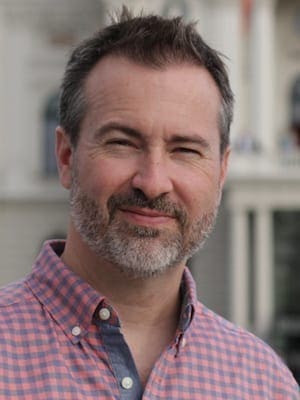New technology, old religion and the freedom of information coalesce around the Oscar-nominated documentary “Burma VJ,” which is still knocking about theaters after an HBO run.
The “VJ” in the title refers to “video journalism” or “video journalists,” which is a contemporary term for a contemporary demand: Our chroniclers are armed with video cameras and editing software, not just – or instead of – pen and paper.
“Burma VJ” focuses on the 2007 citizen uprising against Burma’s military regime that has been in place for 40 years. Prior to the unrest in August and September 2007, the last challenges to power had been in 1988 – when student-led demonstrations led to military reprisals killing 3,000 people.
The engaging film represents a unique partnership between the Burma VJs – who work for the exiled TV station Democratic Voice of Burma – and Anders Ostergaard, a Danish journalist-turned-filmmaker. Ostergaard and his team essentially compiled a documentary arranged around the VJs’ handicam footage of the 2007 protests that led to violence as before.
An opening title card says: “This film is comprised largely of material shot by undercover reporters in Burma. Some elements of the film have been reconstructed in close co-operation with the actual persons involved, just as some names, places and other recognizable facts have been altered for security reasons and in order to protect individuals.”
So up front we’re told that “Burma VJ” mixes on-the-ground footage with re-enactments. The reconstructed scenes largely involve “Joshua,” a VJ for the DVB who wound up coordinating reporting operations from a safe-house in Thailand.
The story is told from his point of view to the extent that we never really see Joshua. We see and hear who he talks to, and we see, along with him, the footage that makes it back to his desk and computer.
Joshua also narrates the film, giving us the necessary background, expressing the fear and frustration that goes along with acquiring information on penalty of, in some cases, death.
It’s a dangerous cycle of stealth videography, smuggled videotapes, uploaded video packages and brief broadcasts around the world about what’s happening in Burma.
The footage is raw, but so are the protests that swell when the country’s Buddhist monks join the cause. We’re told that there are 400,000 monks in Burma. They’re the only group that can make military commanders think twice, but they’re also a group that’s not supposed to do anything “political.”
But the monks protest the regime, taking to the streets and shouting for freedom from fear, distress and poverty. Is that a religious demand or a political one?
As the demonstrations grow, so does the tension. People control the streets, which is a recipe across time and space for a military show of power. Footage from a September march plays out like something from Selma in 1965. A column marches and halts. Words are spoken. Force is brought to bear. Tear gas flies. Chaos ensues.
Monasteries become targets, and a movement stumbles, at least temporarily.
But the monks aren’t the only ones to protest. Students join them, and near the documentary’s end we’re reminded of why documentary is so intimate. As students flee a demonstration gone bad, we huddle with them – and the VJ who stuck around.
“Those who are not afraid to die, come to the front,” says one student demonstrator in a press of young, confused faces.
“Let’s pray to conquer our fear of death,” says another.
That proximity to death gives this documentary part of its life. It’s also animated by a vigorous appreciation for our First Amendment.
Near the beginning of the film, Joshua says: “I feel I want to fight for democracy. But I think we had better make a longer plan.” He was referring to the 1988 demonstrations that turned deadly and the inadequacy, as he saw it, of a plan that only involved getting killed en masse.
“I feel the world is forgetting about us,” Joshua continues. “That’s why I decided to become a video reporter.” As Joshua sees it, a better plan involves information.
And that’s only as good as the minds that choose to know it.
Cliff Vaughn is managing editor and media producer for EthicsDaily.com.
The movie’s Web site is here.

